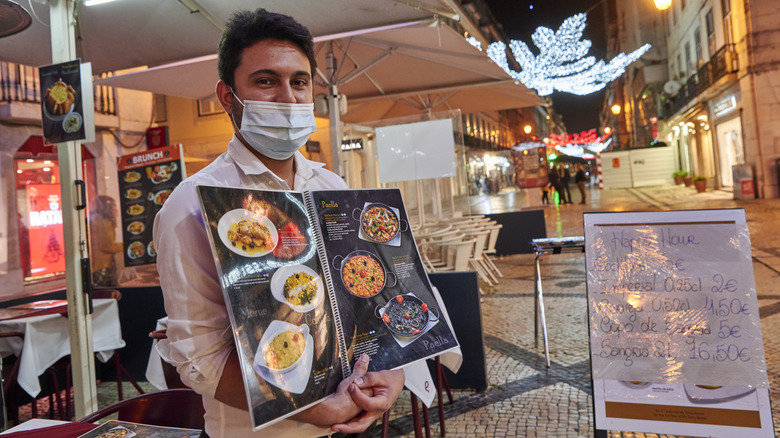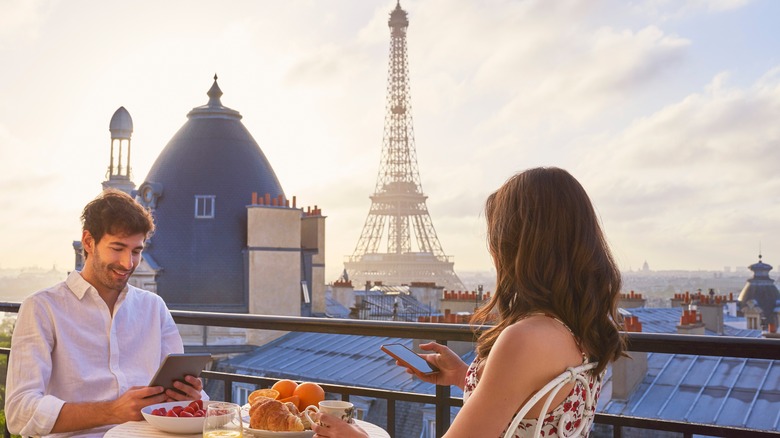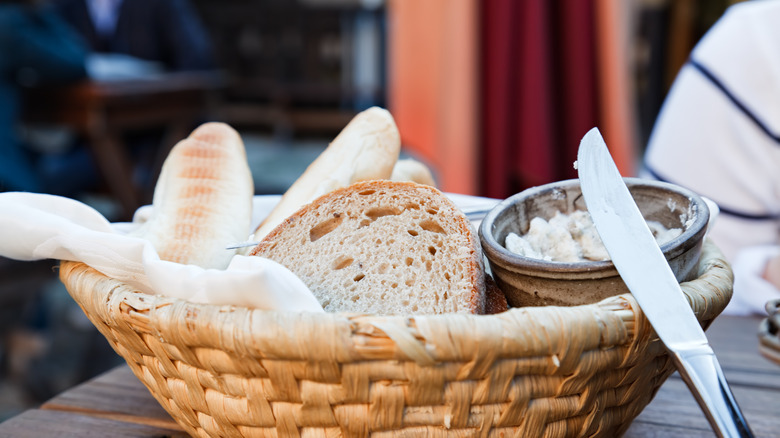One Sure-Fire Sign That A Restaurant Is A Tourist Trap To Avoid At All Costs
Strolling through tourist areas in a new country can be an exciting experience. You get to take in the history and the culture, see the famous landmarks, and even meet a lot of locals. Many of these areas are packed with restaurants and cafes that provide fascinating views of the enchanting city you're visiting, and it can be very tempting to sit down for a meal or grab a cup of coffee. But while prices in these areas are known to be quite higher than usual, that's to be expected and isn't usually a problem.
There is, however, one specific type of restaurant in common touristic areas that you should avoid: places where a waiter or server is standing outside the entrance, urging you to try their authentic, local cuisine. If a restaurant relies on servers to pull in tourists, it's often a sign that this location is a tourist trap that should be avoided at all costs. Read on to find out more about why restaurants with street greeters should raise red flags, as well as other subtle warning signs of a tourist trap you'd want to avoid.
Why restaurants with staff members standing outside can be a red flag
It's rare to find an authentic restaurant with good food that is empty or requires an additional push from employees to actually find customers. Most restaurants worth eating in will have built a reputation for themselves amongst locals, who you'll see enjoying their meals. This is a much better indicator of a restaurant you should try than listening to a staff member standing outside trying to draw customers in.
Tourist trap restaurants often rely on visitors who are unfamiliar with the area and who aren't familiar with local prices or authentic dishes. These eateries, unfortunately, often charge significantly higher prices than local spots while offering lower-quality food. Restaurants in high-traffic tourist areas, such as next to famous landmarks or historic areas, know they have a constant flow of new visitors and do not rely on customers wanting to come back to their restaurant or making a good impression. Instead of focusing on their quality or reputation, they rely on being located in a hot spot, with waiters acting as sales reps to get people through the door — a reliable sign of a tourist spot that isn't worth the hype.
Other warning signs of a tourist trap restaurant to avoid
One other common tourist trap sign is when a restaurant's menu is translated into several languages, has been laminated in plastic, and has a photo of every dish. This most likely means that the restaurant is focused on catering to non-locals. While this doesn't always mean that the restaurant will offer bad quality food, it does often indicate you'll be paying more as they try to take advantage of people who are unfamiliar with the area's prices. Keep in mind that local restaurants usually have simple menus that focus on fresh, seasonal ingredients that are available in the region rather than offering a huge selection meant to appeal to every possible tourist.
A restaurant that feels it needs to use the word "authentic" in every meal description and offers regional dishes in the wrong part of the country is also very likely to be a tourist trap. Many authentic restaurants have locals dining there and do not need to advertise their authenticity. Instead of opting for a restaurant with a fantastic view of a famous landmark, follow the locals, and you'll find hidden gems that will be more worthy of your time and money.
One final cue that may indicate you're being tourist-trapped is when items you didn't order are served at the table. This may mean that the restaurant is overcharging unsuspecting visitors, has hidden fees, or even charges diners for bread, table settings, or other items without informing you up-front. Remember to always check the menu carefully and look for the fine print to ensure that there are no hidden costs.


